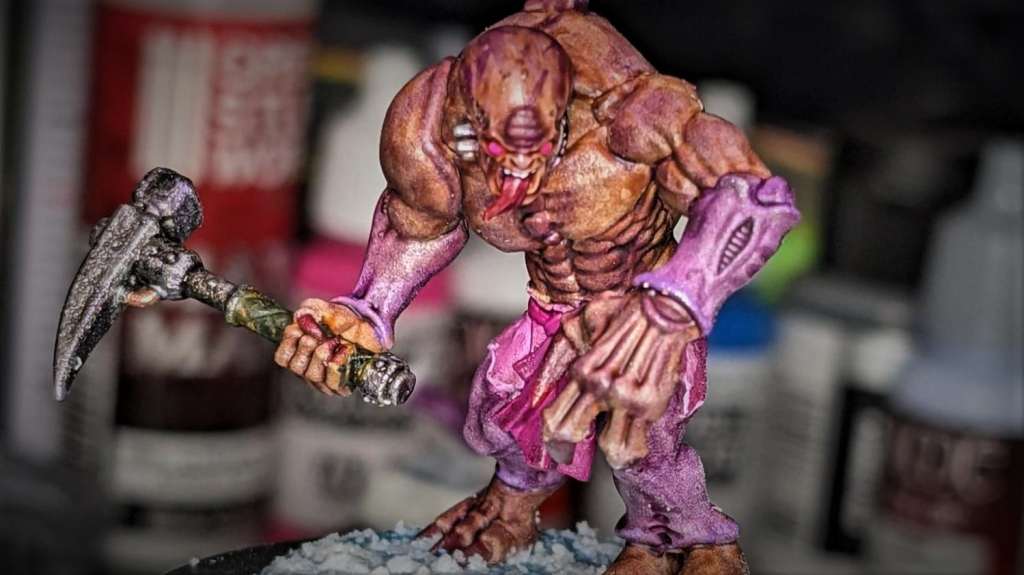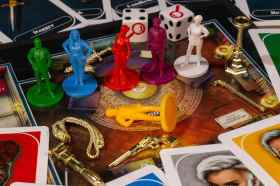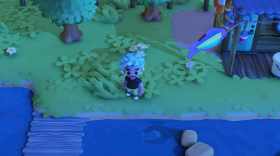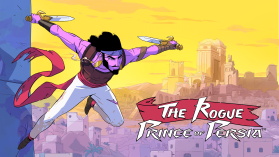Keen to get started painting miniatures, but not quite sure where to begin? Awesome! The good news is that the hobby has truly never been more accessible or friendlier to newcomers – and we’ve got some warm, welcoming tips to help ease you into this incredibly fun and fulfilling hobby.
To kick off, the biggest piece of advice to remember is this:
Painting miniatures is supposed to be an enjoyable, creative expression and not something you should feel intimidated by.
First, a bit about me and my relationship to the hobby: I was an avid player of Warhammer 40,000 3rd edition back in high school. I spent far too much of my mum’s money amassing hordes of Chaos, Dark Eldar, and Space Marines but never painted any of them.
I’d tried to at the beginning, of course, but I quickly felt so woefully inadequate that it put me off ever picking up a paintbrush again. I convinced myself that bringing armies of unpainted grey plastic to the table was less embarrassing than bringing armies I’d painted poorly, so that’s how I carried on until my late teens when I dropped the hobby entirely around 2004.
About a year ago, I started working at a board game/hobby store which sold Warhammer as one of its core lines. It didn’t take long for me to fall back in. This time around, I was determined to actually learn how to paint to a standard I was happy with, and it has now become the aspect of the hobby I love the most.
I am not an amazing painter, but I am an extremely happy one and that’s what really matters!
Without further ado, here are six tips and tricks I give to my customers who are just starting out:
Table of Contents
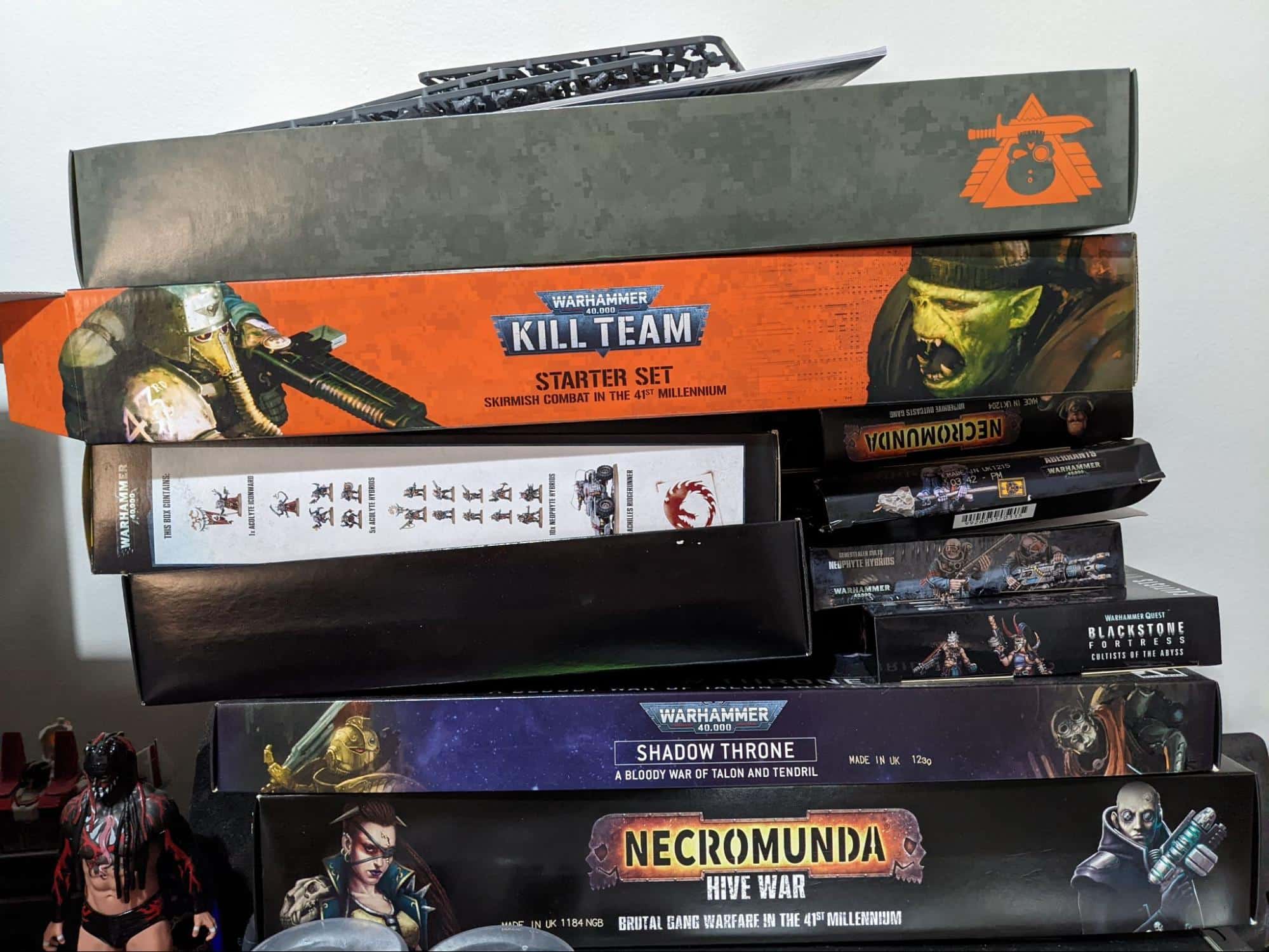
Start with miniatures that inspires you
I often have customers express a desire to get into the miniatures painting hobby but they don’t actually have an idea of what miniatures they want to paint. They’ll come into my shop looking to buy paints and tools to start with, and then decide what figures they want to pick up and work on later.
However, I always strongly encourage people to find some minis that they are actually inspired to paint first.
As with learning any new skill, you are probably going to find it all super frustrating at first. For that reason, if you’re not painting something that actually compels you to work on it, then that frustration is going to be much more likely to outweigh your interest in the whole endeavour.
If you’re not painting something that actually compels you to work on it, then that frustration is going to be much more likely to outweigh your interest in the whole endeavor.
However, if that expensive Necromunda starter set feels a bit too intimidating to learn on, then I highly suggest taking a look at the official Dungeons & Dragons miniatures from WizKids. They come pre-primed, meaning you can slap paint straight on them, and are excellent quality sculpts for their incredibly cheap price point.
There is no need to buy the ‘best’ tools up front
Please do not feel like you need to buy top quality equipment right from the start.
At the same time though, please do not feel like you can necessarily ‘get away’ with buying all of your gear cheaply from a hardware or art store.
A can of spray paint may be a fraction of the price at Bunnings, but it’s almost certainly going to either give you a supremely blotchy finish on your minis or outright damage them.
I paint daily, and a couple of cheap synthetic brushes, this basic tool set from Amazon, a cutting mat, an old jar to serve as a water pot, and a plain white tile to serve as a pallet are still the foundations of what I work with.
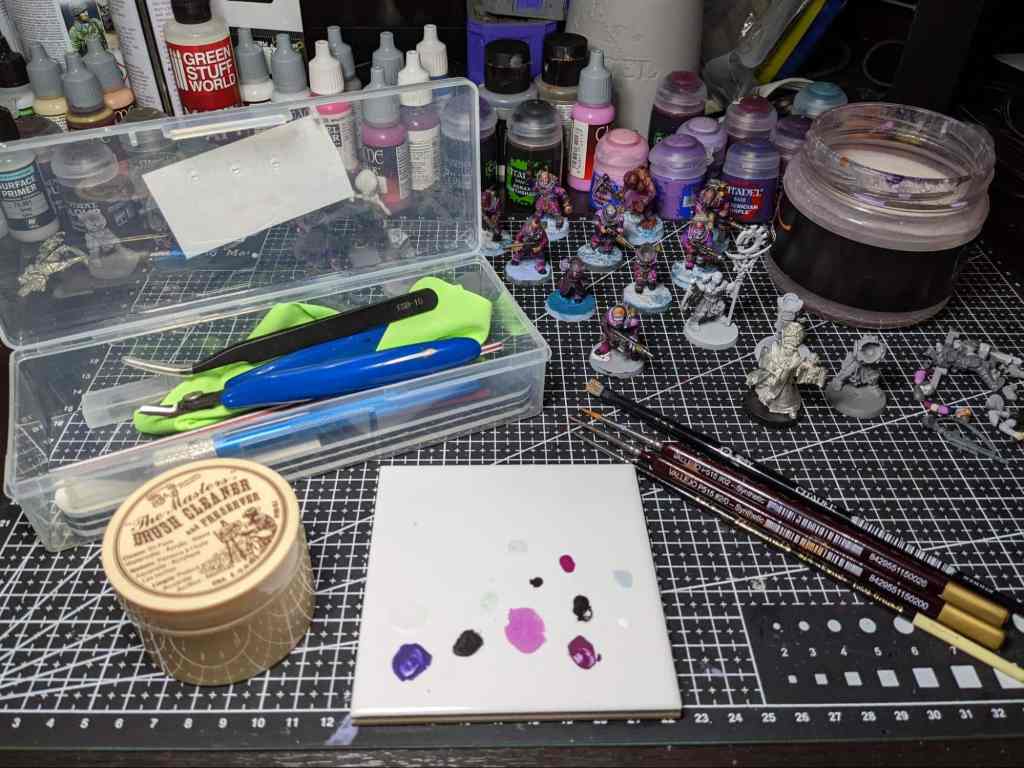
However, the one thing I would strongly advise forking out the cash for is a decent brush cleaner. A container of something like The Master’s will run you around AU $20, but will also last you for years. Cleaning your brushes thoroughly with hot water and proper brush soap only takes a couple of minutes at the end of your painting session, and it goes a long way to maintaining the condition of your brushes over time.
A wet palette and a flexible LED desk light are two more investments I highly recommend making, but they’re also far from essential in the beginning. Well, depending on the light in your workspace, that is!
Not all miniatures are the same
There are a lot of different miniatures out there which are manufactured and finished in a lot of different ways.
Most of the big miniatures games out there – such as Warhammer, A Song of Ice and Fire, and Star Wars: Legion – utilize a form of plastic that requires priming before being painted for optimal results. This is so the paint has a better surface to stick to.
It doesn’t really matter whether you prime them with a spray can, a brush, or an airbrush, the primer should more or less dry to the same kind of base result.
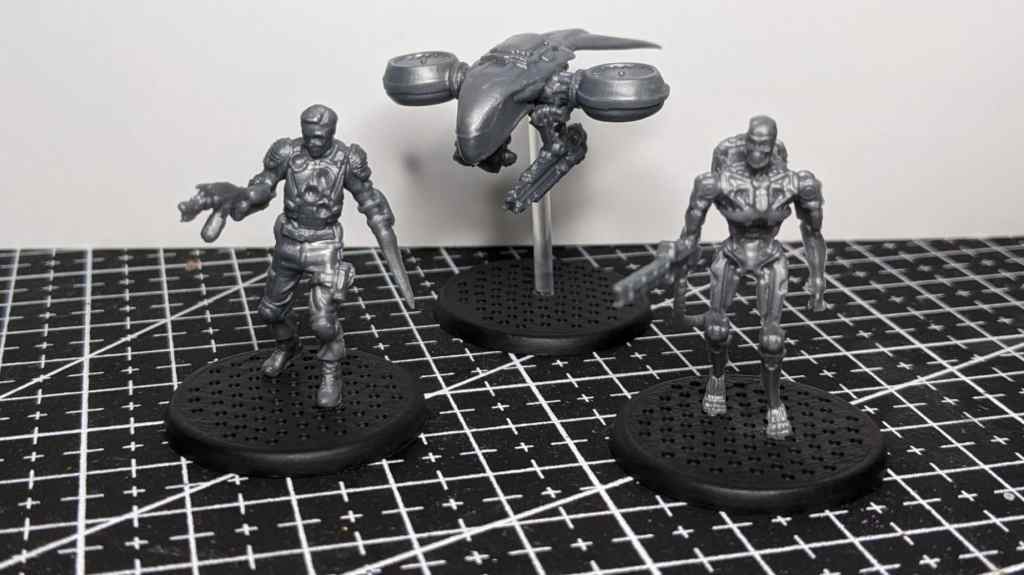
Many miniature-heavy board games however, such as these from the excellent Terminator Genisys game, are made from a cheaper and softer kind of plastic that can potentially have an undesirable reaction to spray paint.
Metal, resin, and 3D printed minis are each going to take differently to different kinds of primer too.
Be mindful of the kind of miniature you’re working with and always test your priming method on just one mini, allowing it to dry fully before you prime the whole squad, just in case.
Don’t be afraid to ask for advice at your local hobby store or online.
The Internet is your friend
Looking for painting tutorials? Inspiration? People to actually play these miniatures games with?
There is an incredible breadth of resources out there online to help you on your journey, and on the whole the community tends to be far more supportive and welcoming of newbies than you might think!
Most games clubs out there will likely have a public Facebook group with information for new members. Your local hobby shop will also likely be able to point you to some clubs and groups in the neighbourhood too.
On Reddit, communities such as r/minipainting and r/warhammer are fantastic for inspiration and advice.
For learning actual painting techniques however, YouTube cannot be beaten.
There are countless mini painting YouTubers out there, but for learning and general advice I highly recommend these playlists:
Whether you’re painting Warhammer miniatures or not, the official Warhammer YouTube channel also features really great tutorials on general techniques, as well as the specifics of how to get the most from their excellent range of paints. Plus, their tutorial videos are entirely ad-free!
Maintain your motivation and don’t give up!
If you’re anything like me, then you’ll probably hate the way your minis look as you’re in the midst of working on them. But that’s totally okay!
Most of the time, they won’t start to look even remotely good until they’re very close to completion – you just have to try not get disheartened along the way.
A great trick I stole from Dana Howl is posting your work in progress to a personal hashtag on social media every single day. I find this helps me in two big ways.
Firstly, being able to see my own progress from start to finish on a mini or unit of minis greatly helps reassure me that I’m actually improving, and reminds me of lessons I learnt along the way.
Secondly, knowing that I’ll put even just 10 minutes of work in every single day helps keep my ‘pile of shame’ feeling like something I might eventually conquer.
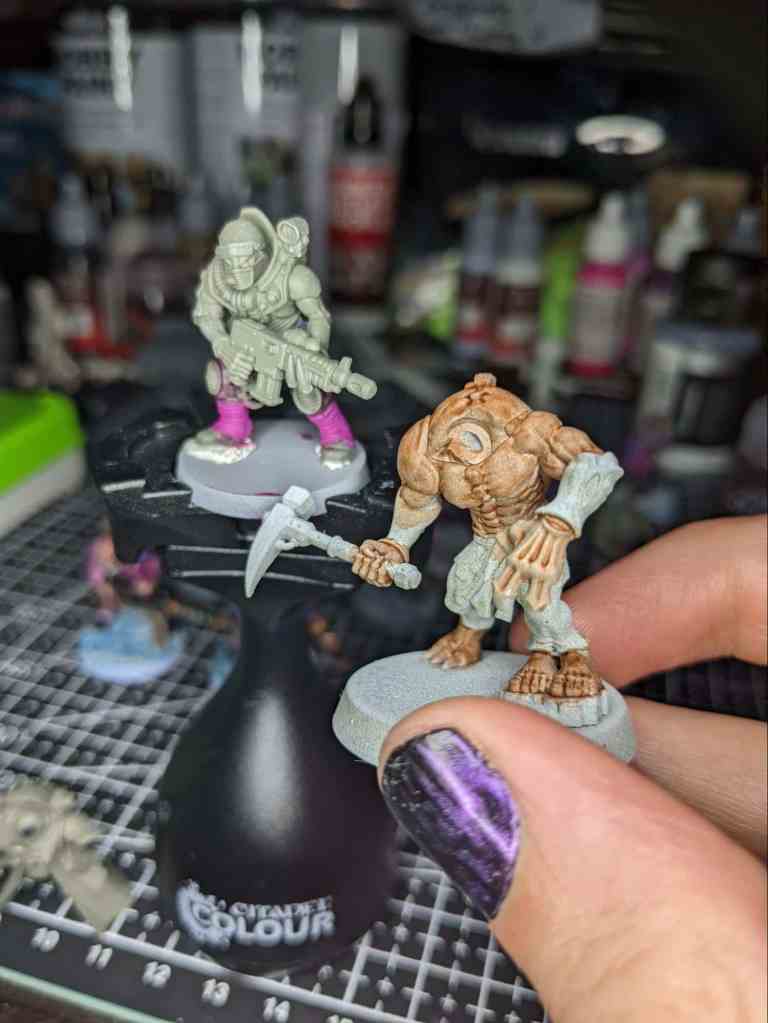

Even if you don’t want to share them online, I highly recommend taking photos as you work on a piece in order for you to look back on how far you’ve come when that piece is done. It can feel really rewarding to reflect on your journey bringing each little mini to life!
Once again, remember that painting minis is supposed to be fun
There’s no ‘incorrect’ colour scheme for your minis and no one absolutely ‘correct’ way of achieving a certain technique or result.
Learn from those more experienced where you can, but don’t be afraid to experiment on your own, too.
All that matters is that you enjoy yourself, and I hope that you do!
For more beginner’s advice on getting into tabletop and board gaming hobbies, read some of our other articles:
- World-building tips for your next TTRPG adventure
- The 10 best board games for beginners
- The best board games of 2021
- The best solo board games for single players
This article has been retimed since its original publication.
